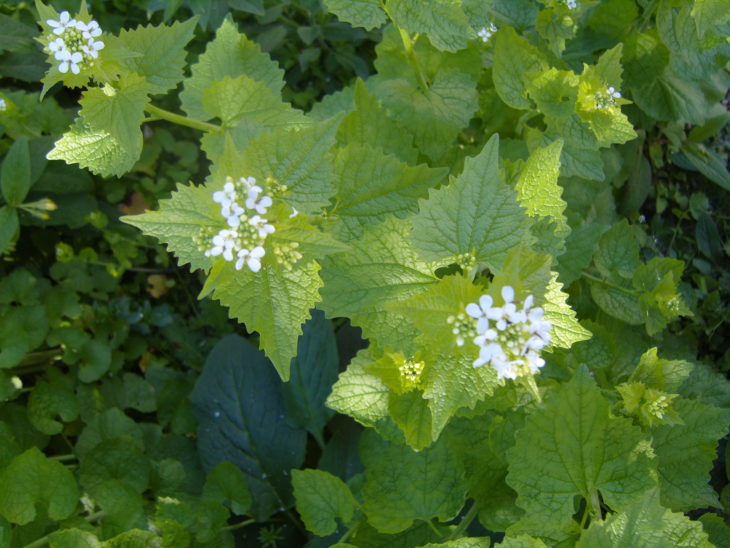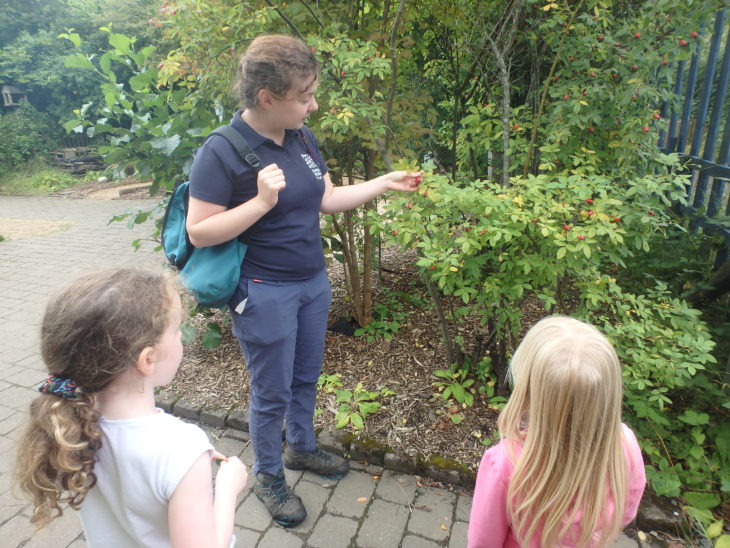Fantastic foraging and where to find food!
Foraging isn’t as hard as you might think, and you don’t have to look far to find something!
There is a lot of garlic mustard here at Jupiter as it grows at the edge of woods where the ground will be damp and shaded. It is common in hedgerows hence the everyday name “Jack by the Hedge” which also relates to its peppery flavour, having “devil like” qualities. It is one of the most common spring-time flowers, standing to a height of up to 1 metre. The flowers open from April to June and peak flowering occurs in mid-May.

Garlic Mustard at Jupiter ©Clare Toner
If you pick some and you’re unsure, when the leaves are crushed there should be an obvious garlic odour. The seed containing pods can be fried, or the seeds crushed as a condiment. The leaves can be added to salads or eaten on sandwiches.
The roots can be collected in early spring and again in late autumn, when no flower stalks are present. garlic mustard roots taste very spicy somewhat like horseradish. In the autumn seed can be collected and eaten.
Some more details when identifying the plant is to look at the flowers. The outside of the mustard flower has four sepals, usually green. The flower itself has four petals usually arranged in the shape of a cross. Flowers usually appear in a cluster. Flowers can appear at any time throughout the growing season of year two of the plant’s growth. First year plants have just a rosette of smaller round or kidney-shaped leaves with scalloped edges. Leaves may be hairless or hairy to varying degrees.
If you want make something from garlic mustard, have a go at this recipe for pesto:
1 cup garlic mustard
1/2 cup basil
3 cloves garlic
2 oz. toasted pinenuts
4 oz. olive oil
juice of 1 lemon
In food processor combine all ingredients except olive oil. Puree and add olive oil with processor running.
Recipe adapted from http://www.fosc.org/GM-Recipe.htm
Remember before you do any foraging to get permission from the landowner. Some plants are protected and cannot be harvested. Also, make sure that you are 100% certain that you know the plant is safe to eat before you eat it. If in doubt, DO NOT EAT IT!
Want to find out more? Come to our event this weekend, Forage for a feast! Book your tickets here: https://scottishwildlifetrust.org.uk/event/forage-for-a-feast/

Looking at rose plants for rosehips ©Linda Johnston
30 Days Wild:
Can you do something wild for 30 days during June? The Wildlife Trusts challenge you to do so and can help you out with a free 30 days wild pack! You can order a pack either in our visitor centre or online: https://scottishwildlifetrust.org.uk/things-to-do/30-days-wild/
Help protect Scotland’s wildlife
Our work to save Scotland’s wildlife is made possible thanks to the generosity of our members and supporters.
Join today from just £3 a month to help protect the species you love.
Preface
Foraging isn’t as hard as you might think, and you don’t have to look far to find something! There is a lot of garlic mustard here at Jupiter as it …
